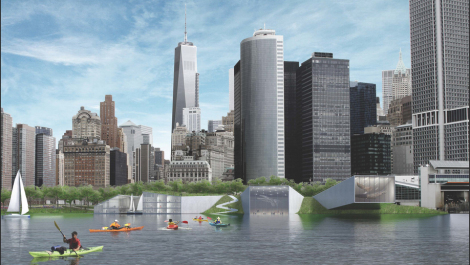
It will cost $1B to keep our New York region high and dry, according to a scientific research study.
Nationally as well as along the famed Jersey Shore, barrier islands are the most vulnerable coastal condition, and the most central to a traditional notion of beach tourism and culture. The Barrier Island project diversifies the traditional beach economy, allowing the economic, social, and ecological health of communities to evolve as the environment of the shore shifts and changes. Identifying a series of high-and-dry nodes with greater access to regional transportation systems and a broader terrain for year-round Eco-tourism, the project provides a new, more resilient choice for the beach-goer.
The headlands are the highest, driest, and least vulnerable of coastal edge typologies. They are characterized by large, linear ocean frontage areas, small communities with well-formed urban cores, access to public transportation, and a network of coastal lakes. Although headland communities offer the potential for less vulnerable, higher density development, they also struggle with water management challenges, a relative absence of ecological resilience, and socially vulnerable populations. The Headlands project introduces a series of layered strategies with integrated social and ecological components to address these challenges.
Research and design strategies focus on the value of “the beach,” a place of special significance to memory, state and local economies, and a vital component of coastal ecosystems. New Jersey’s northern shore is an ideal place to study the identity and function of the beach, since it includes the three coastal typologies found across the eastern seaboard of the United States: Barrier Island, Headlands, and Inland Bay.
http://www.rebuildbydesign.org/project/hra-advisors-inc-with-cooper-rob…
http://portal.hud.gov/hudportal/HUD?src=/press/press_releases_media_adv…